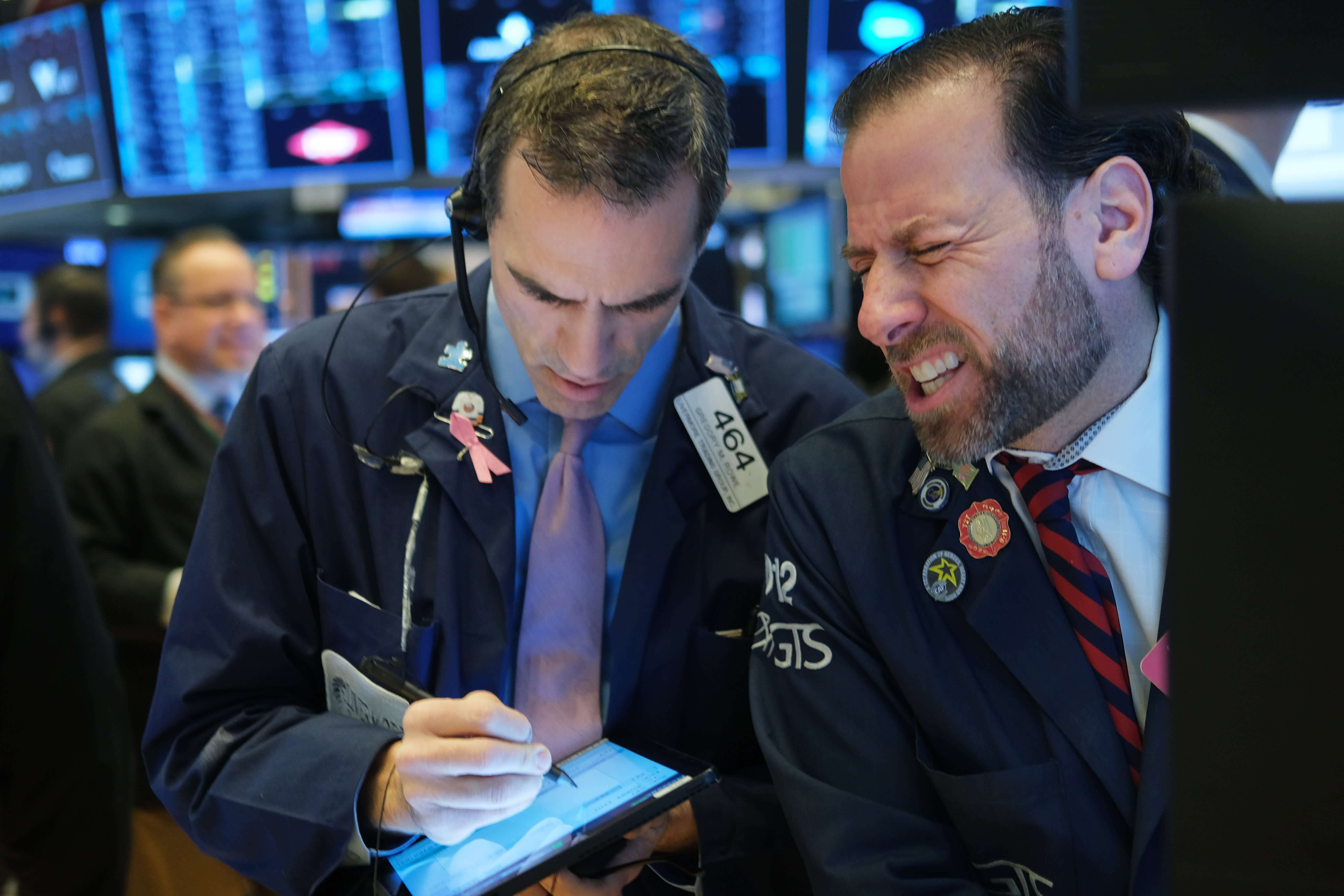
Traders work on the floor of the New York Stock Exchange, January 27, 2020.
Spencer Platt
Here’s the scenario that everyone in my profession dreads: You have a good year relative to your index; you have another excellent year, and then you have a very disappointing year compared with your benchmark, even though clients earned a strong absolute gain.
That about describes where many of my colleagues find themselves after last year’s 28.7% total return in the S&P 500. An estimated 75% of active managers underperformed the S&P 500 last year, with the highest percent of laggards coming from the growth category. That means that most of my colleagues — and I — share this collective sense of being out of sync with the market.
That said, if you’ve lost your mojo, there must be a way to get it back.
To do this, you start by analyzing the source of underperformance. Not to be overly simplistic, but it’s a combination of the negative impact of what you own as well as what you didn’t own.
Assessing your mistakes
Growth-oriented managers who stuck with the Covid-helped theme suffered, as the reopening trade emerged in force once successful vaccines were announced in late 2020. That shift damaged both the largest stocks in winning 2020 cohort — such as Amazon, Netflix and PayPal — but also the newer public companies, including Teladoc [cnbc.com], Zoom [cnbc.com], Peloton and the entire gang of supercharged highly valued equities in the Ark Innovation ETF (ARKK). The Cathie Wood-managed fund peaked in February 2021.
If 20% of your portfolio resides in stocks that are flat on average when your benchmark is up nearly 30%, you fall behind by 6% that year. If those stocks are down 10%, you trail by 8% — a huge delta in our world. How about owning a smattering of biotech stocks? The SPDR S&P Biotech ETF (XBI) collapsed more than 20% in 2021, reflecting a wildly negative sentiment toward the industry, other than vaccine makers like Moderna, which surged until the fourth quarter last year.
Clearly, owning losers is no way to beat your benchmark. However, not owning the index winners is equally important, which causes many equity fund managers to “hug” their benchmark for dear life. I have written previously about how five stocks — Apple, Microsoft, Google, Tesla and Nvidia — accounted for 31% of the S&P 500′s gain last year.
To track the weight of those five names would occupy a sizeable 21% of a portfolio today. While that is higher than their 18% heft at the beginning of 2021, very few active managers would have overweighted them collectively. This might have been particularly true of Tesla, which did not enter the S&P 500 until the end of 2020, when it traded at a triple-digit earnings multiple. It is also in a different universe from its auto industry competitors, but in the same orbit as meme and cult stocks.
The other major deficits that derailed managers last year were a lack of energy stocks and insufficient bank holdings. The S&P 500 energy sector rallied 47.7% in 2021, and financials shot up by 32.6%. However, oil and gas only represent 3% of the S&P even after its banner year, limiting its impact on the index.
How to improve
Now that you’ve assessed your mistakes, what do you do to improve this year? The choices run along three lines of action: stronger conviction on the existing portfolio which is now relatively more attractive; make some adjustments based on a changed economic and market environment; a combination of the two.
From first-hand experience, most of us who bought a stock at $100 think it’s much more attractive at $80 or lower and deploy available cash to add to the most attractive names. This assumes that we know the company well.
Under most economic environments — even intense shocks to the system, such as the financial crisis or the pandemic — the underlying value of a stock and its upside potential should not change much. What might have changed is a herd mentality of “buy now and ask what the company does later” that drives excess pricing.
However, few professional investors coming off a difficult year leave their entire portfolio unchanged. There may be a couple of obvious cases where industry or stock-specific fundamentals no longer justify inclusion in the portfolio, where they occupy too much of what we call “valuable real estate.”
In that situation, if we sell a loser or two, the right move is to snap up some names on our “watchlist” that have also moved much lower during the correction. Other people’s losers can become your biggest winners.
We are in the risk-taking business. We have rules of engagement, and we need to remember those rules, not be afraid, and focus on many years of performance rather than just the last. You can’t lose money if you don’t spend it, but more importantly, you can’t make money if you don’t put it to work.
Karen Firestone is chairman, CEO, and co-founder of Aureus Asset Management, an investment firm dedicated to providing contemporary asset management to families, individuals and institutions.




